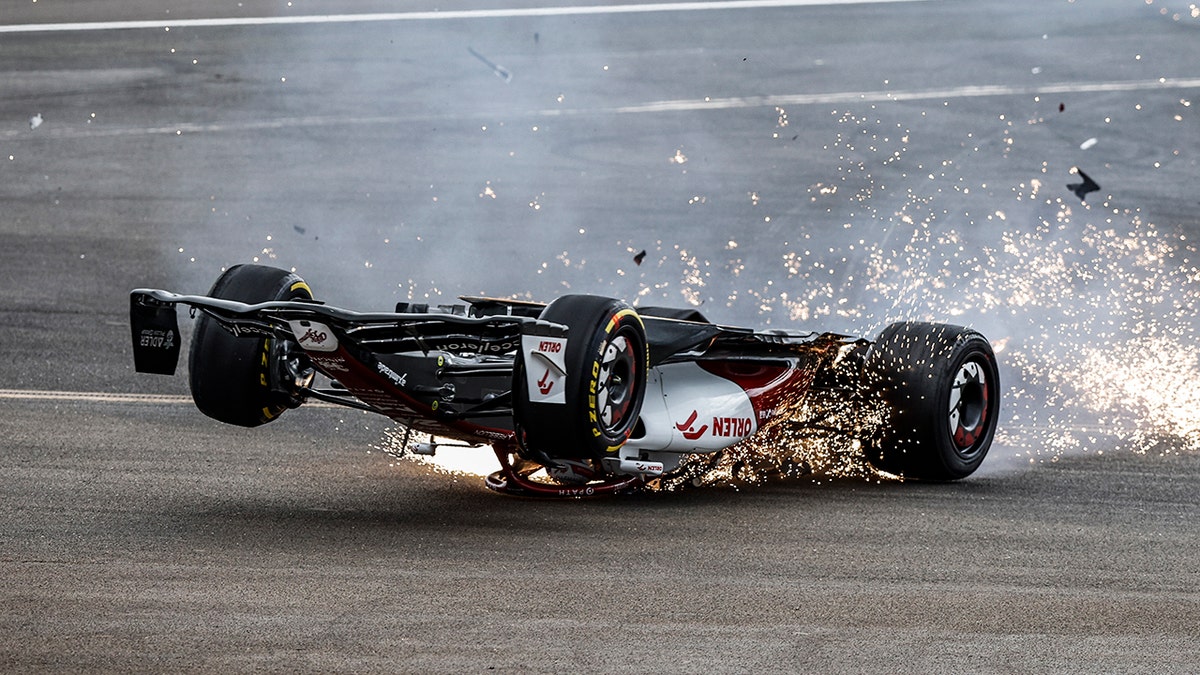The world held its breath. A flash of orange, a sickening crunch of metal against steel, and then an eruption of flame that painted the Bahrain night sky a terrifying, brilliant red. In the heart of the inferno was what remained of a Formula 1 car, torn in two after a 137-mph impact with a trackside barrier. For 28 agonizing seconds, driver Romain Grosjean was trapped inside the raging fireball. When he finally emerged, seemingly walking out of death’s grasp, the motorsport community let out a collective sigh of relief. It was a moment that felt like a miracle, but it wasn’t. It was the result of one of the most controversial, criticized, and ultimately vindicated pieces of technology in modern sports history: the Halo.

When the Halo was first introduced in 2018, the backlash was swift and severe. Drivers, team principals, and fans alike decried it as an aesthetic abomination. It was called an “ugly,” three-pronged titanium structure that betrayed the very essence of open-cockpit racing. Legends of the sport lamented the change, arguing it sanitized a fundamentally dangerous profession. The purity of the formula, they claimed, was being sacrificed. The sleek, aerodynamic lines of the world’s fastest cars were now interrupted by what some derisively compared to a flip-flop strap. It was, in the eyes of many, an unnecessary solution to a problem that rarely occurred, a bulky overreaction that would fundamentally alter the sport for the worse.
But the data told a different story. The Fédération Internationale de l’Automobile (FIA), Formula 1’s governing body, had spent years researching cockpit protection following a series of tragic and near-fatal incidents. After extensive testing, the Halo was proven to be the most effective device for deflecting large debris and protecting a driver’s head in catastrophic impacts. It could withstand the weight of a double-decker bus, a statistic that seemed abstract until the day it was put to the ultimate test. The critics’ voices were loud, but the FIA stood firm, prioritizing safety over aesthetics. It was a decision that would be paid back in the most valuable currency of all: human life.
The first definitive proof of its worth came in its very debut season, at the 2018 Belgian Grand Prix. At the chaotic start, Fernando Alonso’s McLaren was launched into the air, flying directly over the cockpit of rookie driver Charles Leclerc. For a terrifying split second, Alonso’s car sailed over Leclerc’s head, with the front wing and one of the wheels making direct, violent contact with the Halo. The force of the impact left black tire marks on the titanium structure, just inches above Leclerc’s helmet. Without it, the full weight of the car would have come down on his head. The investigation concluded that the Halo had prevented a certain, fatal injury. The debate began to quiet; the “ugly” device had just saved one of the sport’s brightest young stars.

Four years later, the stakes were raised even higher at the 2022 British Grand Prix. In one of the most violent crashes in recent memory, Zhou Guanyu’s Alfa Romeo was flipped upside down on the opening lap. The car’s roll hoop—the primary structure designed to protect the driver in a rollover—disintegrated on impact with the asphalt. As the car skated across the track and gravel at horrifying speed, the only thing preventing Zhou’s helmet from being ground against the abrasive surface was the Halo. It carved a trench in the gravel, absorbing unimaginable forces as it maintained a crucial survival space around the driver’s head. The car then barrel-rolled into the catch fence, but the Halo held its shape, protecting him from multiple impacts. He emerged, shaken but miraculously unharmed, a walking testament to the device that had once been so fiercely opposed.
The Halo’s list of life-saving interventions continued to grow. At the 2021 Italian Grand Prix, a bitter rivalry between Lewis Hamilton and Max Verstappen culminated in a collision that saw Verstappen’s Red Bull launched on top of Hamilton’s Mercedes. The rear wheel of Verstappen’s car, weighing over 20 pounds and spinning at high speed, came down directly on Hamilton’s Halo before making contact with his helmet. The titanium structure absorbed the primary impact, preventing a broken neck or a crushed skull. Hamilton later spoke of the immense gratitude he felt for the device, admitting he wouldn’t be here without it.
Even seemingly smaller incidents highlighted its constant, silent protection. During the 2021 Emilia Romagna Grand Prix, Valtteri Bottas was involved in a high-speed collision that sent debris flying. A wheel and suspension arm from the other car were launched directly toward his cockpit. The Halo, acting as a shield, deflected the potentially lethal projectiles away from his head. It was a stark reminder that death in motorsport doesn’t always come from a spectacular fireball; it can come from a stray piece of carbon fiber traveling at hundreds of miles per hour.

But it is Grosjean’s crash in Bahrain that remains the definitive, unanswerable argument for the Halo’s existence. When his car speared the steel barrier, the force was a staggering 67 Gs. The Halo acted as a wedge, prying apart the layers of the Armco barrier and creating a path for his helmet to pass through. Without it, the investigation concluded, the outcome would have been instantaneous and gruesome—decapitation or catastrophic blunt force trauma. It not only saved him from the initial impact but also preserved the integrity of the cockpit, giving him the precious seconds he needed to unbuckle his seatbelt and climb out of the flames. He suffered burns to his hands, but he was alive. He was a husband and a father who would return to his family.
The conversation around the Halo has now fundamentally changed. The complaints about its appearance have faded into irrelevance, replaced by a deep-seated respect and appreciation. It is no longer seen as a blemish on the sport but as an essential part of it, a guardian angel forged from titanium. Drivers who once criticized it now climb into their cockpits with a profound sense of security, knowing it is there to protect them. The Halo is a powerful lesson in progress, a symbol of a sport that is willing to evolve and place the lives of its athletes above all else. It is the ugly duckling that became a swan, not of beauty, but of life-saving grace, forever silencing its critics with the undeniable truth of its purpose.
News
Die Welt hat sich weitergedreht: Marie Fredriksson rechnet leise ab – 5 Stars, die sie im Stich ließen.
Der Klang von Roxette war der Soundtrack einer ganzen Generation. Mit Hits wie „It Must Have Been Love“ und „The…
Conny Froboess: Die bittere Wahrheit hinter der Traumkarriere – Im Alter trägt sie eine unheilbare Wunde.
Der Name Conny Froboess ist in Deutschland untrennbar mit einem Gefühl von Leichtigkeit und sonnigen Kindertagen verbunden. Wenn ihr größter…
DER WACKELDACKEL DER REPUBLIK: WIE MERZ’ „HERBST DER REFORMEN“ IN EINER EISZEIT DER STARRE ENDETE UND UNSERE ZUKUNFT VERPFÄNDET WIRD
Einbruch in die politische Wirklichkeit: Die bittere Bilanz nach dem Versprechen des Aufbruchs Mit großen Versprechungen begann die Zeit, die…
Bommes’ Nerven liegen blank: Unerwarteter Eklat in der letzten Folge von „Gefragt – Gejagt“ schockt die Fans
Ein Augenblick, der das harmonische Ende einer Quiz-Saison sprengte. Ausgerechnet in der vorerst letzten Ausgabe der erfolgreichen ARD-Show „Gefragt –…
Herzschlag-Finale in der Scheune: Friedrich und Laura trotzen dem TV-Kitsch mit dem ehrlichsten Liebesbeweis der Staffel
Der leise Moment, der lauter spricht als jede große Inszenierung Es war der Moment, auf den Millionen von Zuschauern der…
Kai Pflaume bricht sein Schweigen: Das 30-Jahre-Geheimnis hinter Deutschlands Vorzeige-Ehe und warum seine Ilke sein wichtigstes Korrektiv ist
Die deutsche Fernsehlandschaft hat viele Gesichter, aber nur wenige sind so konstant, so sympathisch und so untrennbar mit dem Gefühl…
End of content
No more pages to load












